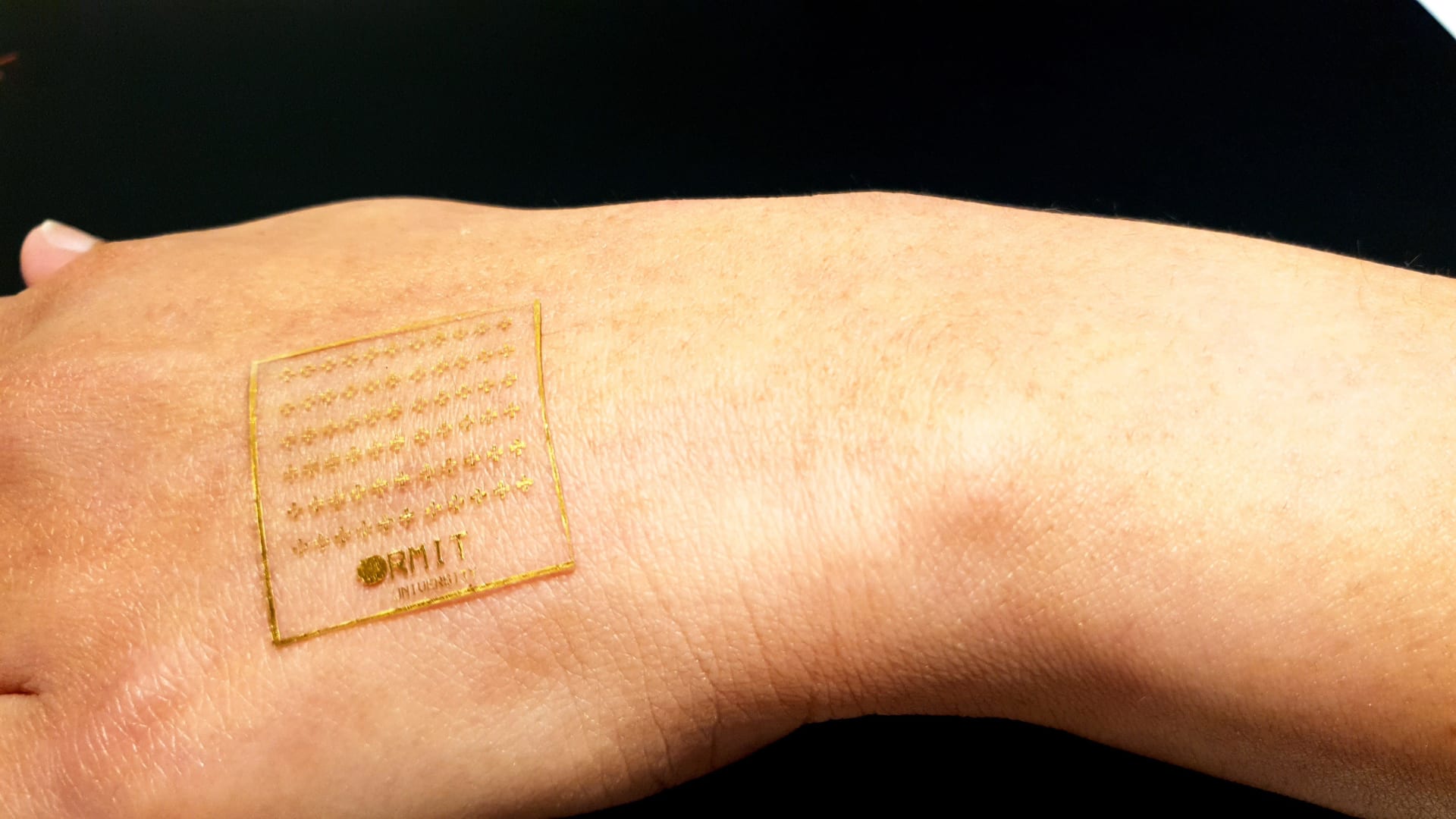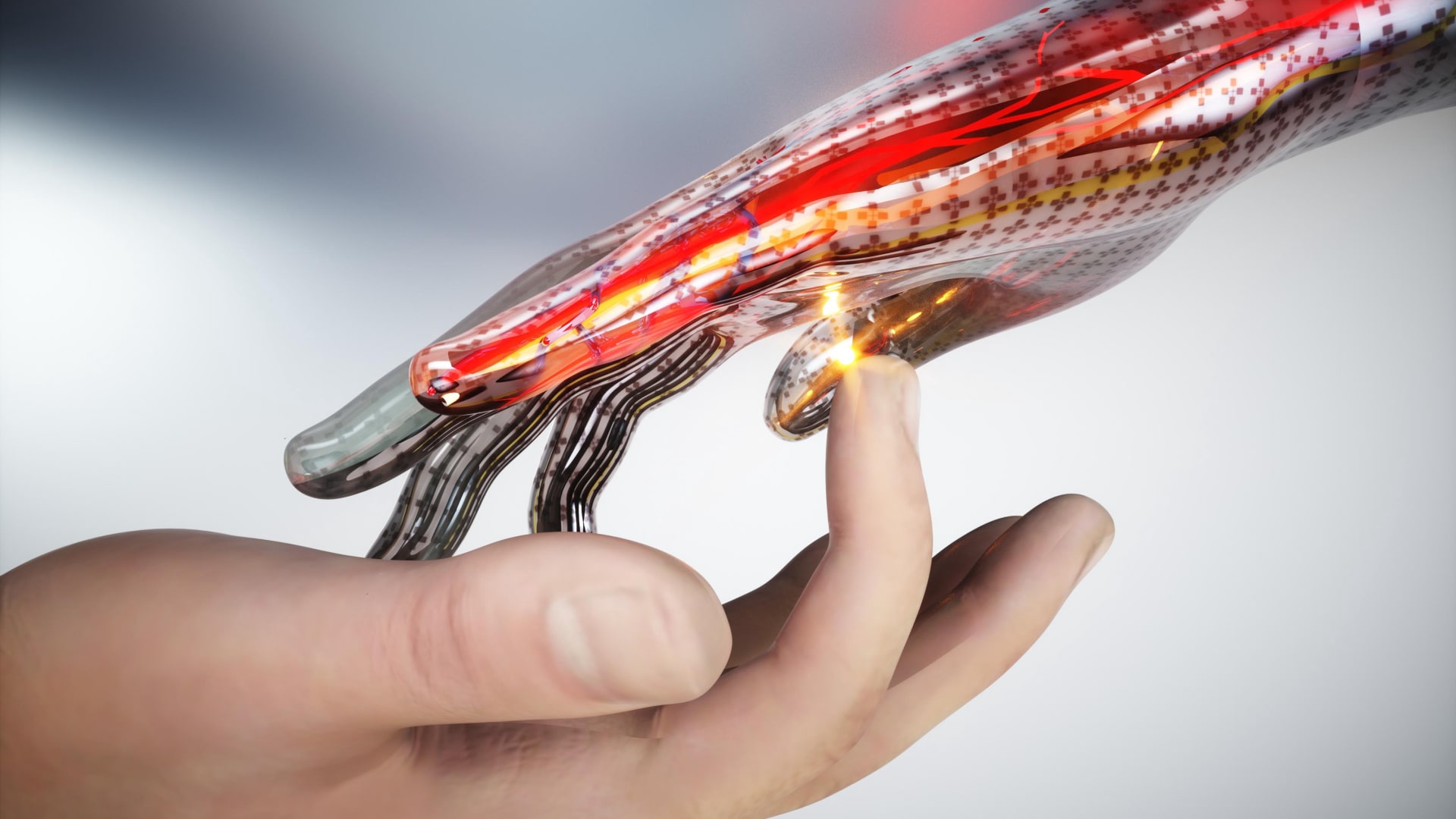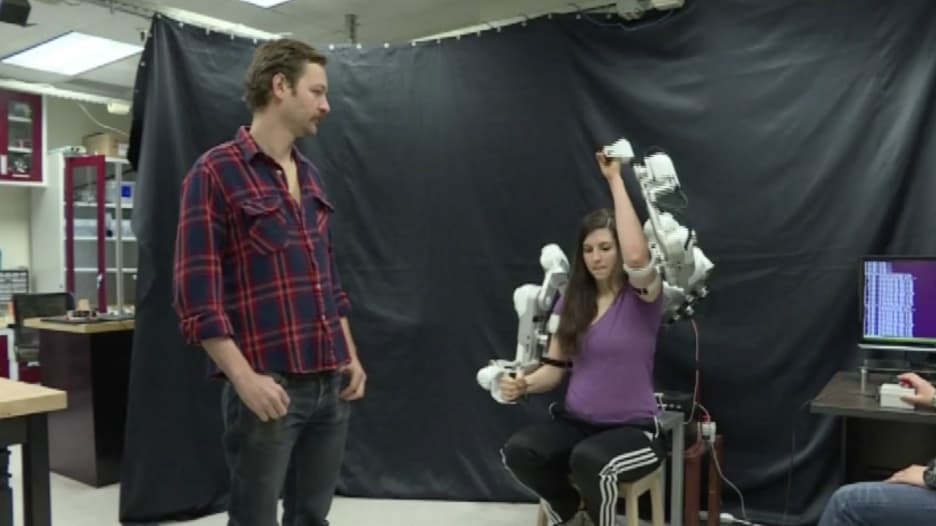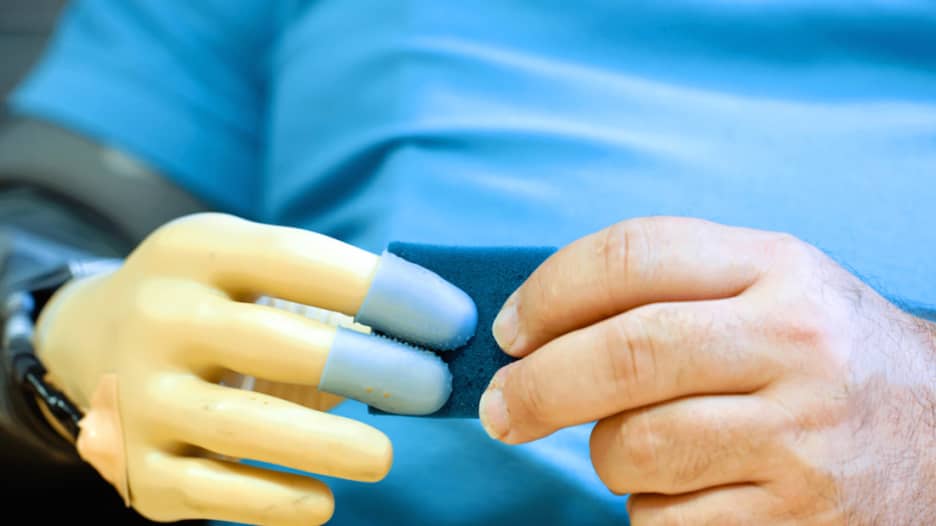دبي، الإمارات العربية المتحدة (CNN) -- تمكن الباحثون في جامعة "RMIT" بأستراليا من تطوير جلد اصطناعي يتفاعل مع محفزات الألم تماماً مثل الجلد الحقيقي.
وتقول مادو بهاسكاران، أستاذة الهندسة في جامعة "RMIT" في مدينة ملبورن الأسترالية والباحثة الرئيسية في المشروع، إن الجلد الاصطناعي مصنوع من مطاط السيليكون، وله ملمس يحاكي الجلد الحقيقي، كما أنه "مشابه للجلد في خصائصه الميكانيكية".
ويمكن أن يؤدي إلى ابتكارات رائدة في مجال الأطراف الصناعية والروبوتات.

رد فعل سريع
وتماماً مثل الجلد الحقيقي، تم تصميم النسخة الاصطناعية لتتفاعل عندما يتجاوز الضغط أو الحرارة أو البرودة حد الألم، وتتكون طبقاته الخارجية من دوائر إلكترونية مزودة بأجهزة استشعار تستجيب لمحفزات الألم.
وتشرح بهاسكاران أن الجلد البشري مصمم لإرسال إشارات كهربائية إلى الجهاز العصبي المركزي، موضحة أن الدوائر الإلكترونية في النسخة الاصطناعية تعمل بطريقة مماثلة، وبالسرعة ذاتها.
وعندما نلمس شيئاً حارقاً، ترسل مستقبلات الألم في جلدنا إشارة كهربائية عبر الأعصاب إلى الدماغ. ويرسل الدماغ إشارته الكهربائية الخاصة به لبدء استجابة، على سبيل المثال رد فعل لتحريك الطرف المصاب من الجسم بعيداً عن مصدر الحرارة.
وبالطريقة ذاتها تقريباً، عندما يكتشف أحد المستشعرات الموجودة في الجلد الاصطناعي محفزاً للألم، فإنه يرسل إشارة كهربائية إلى أجزاء تحاكي الدماغ في الهيكل، بحسب ما قالته بهاسكاران. ويمكن برمجة تلك الأجزاء لتطلق فعل الحركة.
وتشير بهاسكاران إلى أن الأمر المهم هنا هو حد الألم، موضحةً أنه على الرغم من أننا نشعر بالمحفزات باستمرار، فإننا نتفاعل فقط عند حد معين، "مثل لمس شيء شديد الحرارة".
وتوضح أن الدماغ والجلد يقارنان المحفزات ويحددان أيها خطير. وعند تطوير الجلد الاصطناعي، وضع العلماء تلك الحدود للإلكترونيات التي تحاكي الدماغ.
والنتيجة هي جلد اصطناعي يمكنه التفريق بين اللمسة اللطيفة للدبوس أو الطعنة المؤلمة.

الأطراف الصناعية الذكية
ويمكن أن يساعد الجلد الاصطناعي في تطوير أطراف صناعية ذكية مغطاة بجلد وظيفي يتفاعل مع الألم مثل الأطراف البشرية، مما يسمح لمرتديه بمعرفة ما إذا كان يلمس شيئاً قد يتسبب في تلفه.
وتقول بهاسكاران: "لقد قطعنا شوطاً طويلاً مع الأطراف الصناعية، ولكن التركيز كان بشكل كبير على الإجراءات الحركية التي يمكن أن يؤديها الطرف الاصطناعي".
ونظراً لأن الأطراف الاصطناعية التقليدية لا تحتوي على جلد، فإنها لا تستشعر المخاطر الخارجية، لذا فإن وجود طبقة تحاكي الجلد سيجعلها أكثر واقعية، بحسب ما قالته بهاسكاران.
وترى بهاسكاران أن الجلد الاصطناعي لديه إمكانية لاستخدامه في عمليات ترقيع الجلد. ويمكن كذلك أن يستخدم لصنع قفازات جراحية ذكية، لتوفر الإحساس الذي يُفقد عادةً عند ارتداء القفازات الواقية.
أما عن أكثر التطبيقات التي يمكن التطلع إليها، فهي الروبوتات، إذ لا توفر البشرة الاصطناعية المستشعرة للألم وظائف واقعية فحسب، بل تمنح أيضاً روبوتاً بشرياً محتملًا لديه القدرة على الشعور بالألم، وهي خطوة مثيرة للاهتمام ليس فقط من الناحية التكنولوجية، ولكن من الناحية الفلسفية أيضاً.







